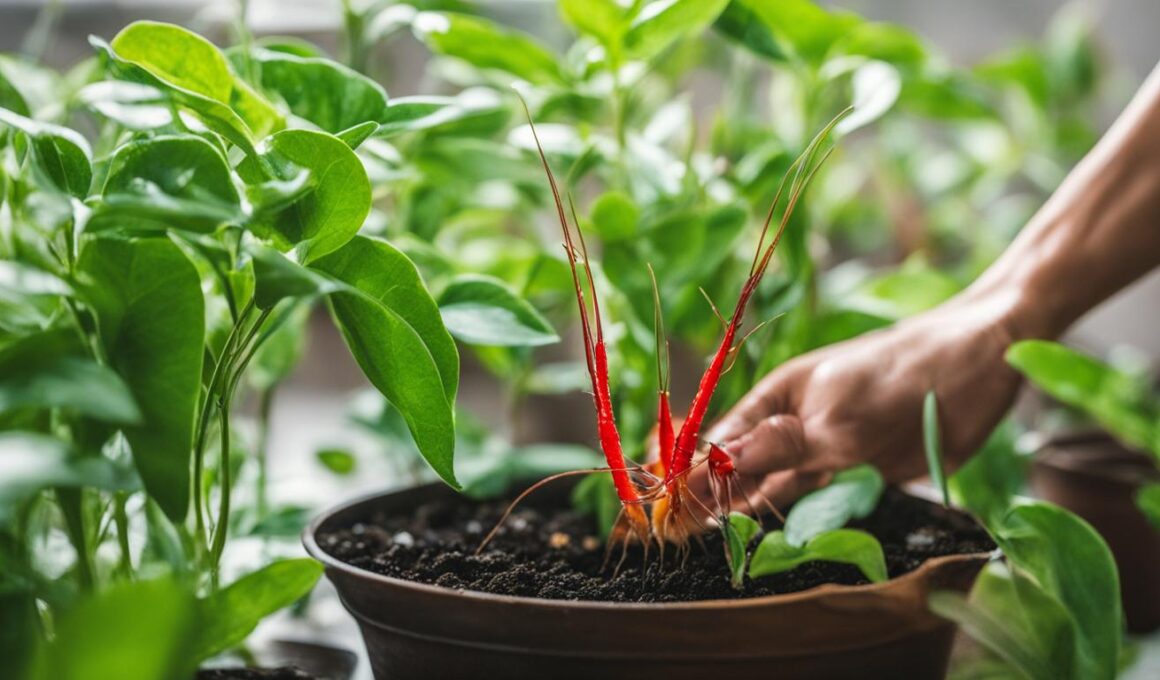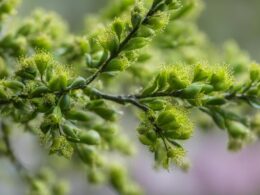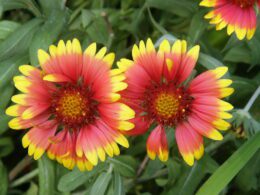Welcome to our guide on the easy care of the shrimp plant, also known as Justicia brandegeeana. If you’re looking for a low-maintenance shrub that will thrive with minimal effort, then this is the plant for you! In this article, we’ll share some expert tips on how to care for your shrimp plant so that it thrives and brings vibrant colors to your garden.
The shrimp plant is an evergreen shrub native to Central America and Mexico. With its oval, green leaves and shrimp-like bracts in colors ranging from light pink to rusty red, this plant is a true showstopper. It blooms for months at a time, attracting attention from both humans and pollinators. Plus, it can survive occasional hard frosts, making it a hardy choice for your garden.
To ensure your shrimp plant thrives, it’s important to provide it with the right conditions. Well-drained loamy or sandy soil, partial shade with morning sun, and high humidity are key. Avoid overwatering, as the plant prefers moist soil. Regular pruning will encourage fuller growth and more blooms, while fertilizing with a balanced, all-purpose liquid fertilizer will keep it nourished throughout the growing season.
Whether you’re a seasoned gardener or a beginner, the shrimp plant is a fantastic addition to any garden. Its versatility allows it to be grown in the ground or in pots, providing endless possibilities for your outdoor space. With a little care and attention, your shrimp plant will thrive and bring a touch of exotic beauty to your garden year-round.
Cultivation and History of Shrimp Plants
Discover the fascinating cultivation and rich history of the shrimp plant, scientifically known as Justicia brandegeeana. Native to the tropical regions of Mexico and Guatemala, this ornamental evergreen shrub belongs to the Acanthaceae family, which also includes popular plants like hummingbird plants, Persian shield, and Mexican petunias.
Admired for its stunning appearance and ease of maintenance, the shrimp plant thrives in USDA hardiness zones 9 to 11. It can reach an impressive height and spread of up to five feet, making it a show-stopping addition to any garden or landscape.
The glossy green leaves of the shrimp plant serve as a backdrop for its unique shrimp-like bracts, available in a mesmerizing array of colors, including vibrant red, delicate pink, and sunny yellow. While the plant’s flowers are short-lived, they attract enchanting hummingbirds and butterflies, adding an extra touch of natural beauty to your outdoor space.
The name “Justicia” is a tribute to the Scottish gardener James Justice, who made significant contributions to the field of horticulture. Meanwhile, the specific epithet “brandegeeana” honors the botanist Townsend S. Brandegee, known for his extensive work in plant taxonomy.
Due to their captivating beauty and minimal care requirements, shrimp plants have traveled far beyond their native lands, finding a home in gardens across the globe. Experience the allure of the shrimp plant as you delve into its vibrant history and consider adding this remarkable plant to your own botanical collection.
How to Grow and Care for Shrimp Plants
Shrimp plants are relatively easy to grow and care for. They thrive in partial to full shade conditions, making them suitable for areas with limited direct sunlight. To ensure the healthy growth of your shrimp plants, follow these essential care tips:
- Choose the right soil: Shrimp plants prefer well-drained, loamy soil that is slightly acidic to neutral. Ensure the soil provides adequate drainage to prevent waterlogging and root rot.
- Provide consistent moisture: Keep the soil consistently moist as shrimp plants prefer slightly damp conditions. However, they can tolerate some dryness between waterings, so avoid overwatering as it can lead to root rot.
- Prune regularly: Regular pruning is recommended to maintain a bushy appearance and encourage more prolific flowering. Trim back any dead or diseased branches and remove spent flowers to promote continuous blooming.
- Fertilize wisely: Feed your shrimp plants with a balanced, all-purpose liquid fertilizer during the growing season. Follow the manufacturer’s instructions for application rates and frequency.
- Protect from freezing temperatures: Shrimp plants are sensitive to freezing temperatures. If you live in a colder climate, it’s crucial to protect your plants from frost. Consider bringing them indoors during the winter months or covering them with a protective cloth or mulch.
With proper care, shrimp plants can thrive and add a vibrant touch to your garden. Remember to provide them with the right growing conditions, regular pruning, and adequate protection from frost. By following these care guidelines, your shrimp plants will reward you with stunning blooms throughout the year.
Conclusion
The shrimp plant, Justicia brandegeeana, is a captivating and easy-to-care-for ornamental shrub that adds a touch of tropical beauty to any garden. With its unique shrimp-like bracts and vibrant blooms, it is sure to attract attention. By providing the plant with well-drained soil, partial shade, and regular watering, it can thrive and display its stunning colors year-round.
Regular pruning and fertilizing can enhance its growth and flowering performance. Whether planted in the ground or in pots, shrimp plants are versatile and can be enjoyed by both experienced and novice gardeners. With the right care and attention, your shrimp plant will bring a touch of exotic charm to your outdoor space.
Caring for shrimp plants involves a few essential tips: providing well-drained soil, ensuring partial shade, and maintaining regular watering. Regular pruning and proper fertilization can maximize the plant’s growth potential and encourage abundant flowering. Whether you’re a seasoned gardener or just starting out, shrimp plants are an excellent choice for adding a touch of tropical flair to your garden or patio.
So why wait? Start caring for your shrimp plants today and create a vibrant and captivating outdoor oasis that will be the envy of all. With a little love and attention, your shrimp plants will thrive and reward you with their spectacular beauty year after year.
Would the Care Tips for Shrimp Plants Apply to Bonsai Trees as Well?
Shrimp plants and bonsai trees require different care. While shrimp plants thrive in humid conditions, bonsai trees prefer well-draining soil. However, when it comes to growth, knowing how large bonsai trees grow is essential. Proper pruning and shaping techniques are crucial for maintaining the size and shape of bonsai trees.
What Are the Best Care Tips for Deadheading Shrimp Plants?
When it comes to deadheading shrimp plants, it’s important to follow a deadheading begonias frequency guide. By removing faded blooms regularly, you encourage new growth and prolong the flowering season. Use clean scissors to snip off the spent flowers, and be sure to deadhead regularly for best results.









